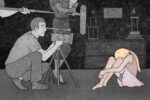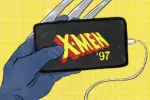Disney is attempting to grow into the hearts of a newer generation of youth, coming into a new day and age in which inclusion and diversity play a more important role, both in life and in television. As many attempt to create movies that attract the interest of the youth as well as address developing social concerns, in walks “Sneakerella”.
“Sneakerella,” which was released on Disney+ on May 13, is Disney’s latest attempt to find the glass slipper — or in this case, sneaker — that could be the perfect fit for its new audience.
But here’s the question: Does the shoe actually fit?
“Sneakerella” uses an old and successful story to reach that new fan base without straying far from its roots. The Cinderella story has been reused and remade with an abundance of different plots that still retain its classic features, including the fairy godmother, the evil stepfamily and of course the beautiful ball and the slipper left behind at midnight.
Over the past couple of decades, there have been movies like “A Cinderella Story” (2004), which introduces the internet to the tale; “Another Cinderella Story” (2008), which focuses on dancing; “A Cinderella Story: Once Upon a Song” (2011), which uses singing as the focus; and “Rags” (2012), which also centers around singing and music.
With this newest addition to the Cinderella story comes the second gender-swapped version following the aforementioned “Rags.”
“Sneakerella” features a young boy named El (Chosen Jacobs), an aspiring sneaker designer who works as a stock boy at a shoe store that was owned by his late mother. Of course, following the Disney Cinderella story — with genders reversed, of course — El lives with his stepfather and two bullying stepbrothers.
In the film, El meets a girl outside of a store for a famous sneaker drop and goes on a journey with her. Later, El finds out that that girl is Kira King (Lexi Underwood), the daughter of a famous sneaker designer.
Now, the rest of the plot is pretty much the same as any other Cinderella story, but with a lot more sneakers and rap songs. I’m sure you can imagine the fairy godfather who helps El by giving him fancy clothes and a bright orange car to get to the ball — as well as everything going downhill afterward, with El losing his sneaker on the escalator but having to run as the clock strikes 12. Then of course comes the search for the sneaker owner, conducted by Kira King (who is even marketed by Disney as flipping the script on the classic Cinderella story) and in the end, everything falls into place for El with a sneaker designing deal with the King Company and him getting the girl.
Now that’s just a short description of the plot, but honestly, the plot isn’t what Disney focuses on the most. What this film looks like is an attempt to relate to a new and diverse audience of youth.
As far as Cinderella stories go, “Sneakerella” does break the mold by featuring a diverse cast. When many people think of Disney movies, especially Cinderella, the cast is often completely white and straight. “Sneakerella” tries to combat Disney’s lack of diversity, but it almost feels like they are checking boxes and not putting too much effort into what it adds to the plot.
With this predominantly Black cast comes a whole lot of Black stereotyping, which was noticed by the public ever since the trailer. Yes, this movie is a great way for Disney to finally stick their heads into the future, but there are a lot of questions over whether they did this the right way: Many people have commented on the movie and how it plays on the Black stereotypes of sneaker culture as well as rap, which people believe would not have been included if this was a white cast.
Another area in which Disney throws the audience a bone — only again to seem like they are checking off boxes — is with the character of Sami (Devyn Nekoda), El’s best friend. In a very short conversation between Sami and El on the train, it is revealed through a very offhand statement that Sami is a lesbian; but as offhandedly as it is stated, it is even more quickly glossed over when El uses his pens to design and fix Sami’s sneakers. This happens within the first 10 minutes of the movie, and it is never discussed or shown in any other way after the fact. It almost seems completely unnecessary and has no effect on the plot whatsoever, which doesn’t look good for Disney in the eyes of fans. But on the positive side, maybe this brief conversation shows that Disney will be trying to become more inclusive in the future.
Another thing that falls flat is the attempt of “Sneakerella” to pander to new fans. It seems like executives sat in a room asking, “What do kids like nowadays? Rap…put it in, Dancing … add it … sneakers … of course … new age animated graphics … okay we can use that. Diversity and inclusion … we’ll give it a shot, oh and obviously everyone would love a Cinderella story as the foundation” and bam! “Sneakerella” was born.
So yes, “Sneakerella” offers a twist on the classic Cinderella story with the genders reversed and more diversity than usual for Disney, but as to whether it is a success, none of what they wanted to work really does. It is ultimately the catchy music and the outstanding choreography that keeps the audience engaged with the movie.
The musical numbers in “Sneakerella” feature a strong mix of genres, including the opening pop/hip-hop number “Kicks” sung by El that features an “In the Heights”-style dancing in the streets; “Best Ever,” a poppy duet between El and Kira that shares a similar story to “A Whole New World” from “Aladdin”; “In Your Shoes,” which is an emotional ballet sung by El where we learn about his mom and the past; “Work Up,” a pop/hip hop song sung by El where he is designing and creating his newest pair of sneakers; “Life Is What You Make It,” which is a catchy trio between El, Sami and Gustavo, the fairy godfather of the story (Juan Chioran); “Shut It Down,” a scheming rap song sung by the evil stepbrothers; and, of course, the “Finale,” which is a rap battle at the end of the movie that grabs everyone’s attention.
The musical numbers, which feature catchy choruses, creative choreography and engaging storylines, are what keep the audience happy throughout the movie and cover up some of the issues with the plot and the lacking attempts at diversity and inclusion.
With all of this in mind, when asked the question if the “Sneakerella” slipper fit, in the end it seems like this shoe would be a size too small.
















